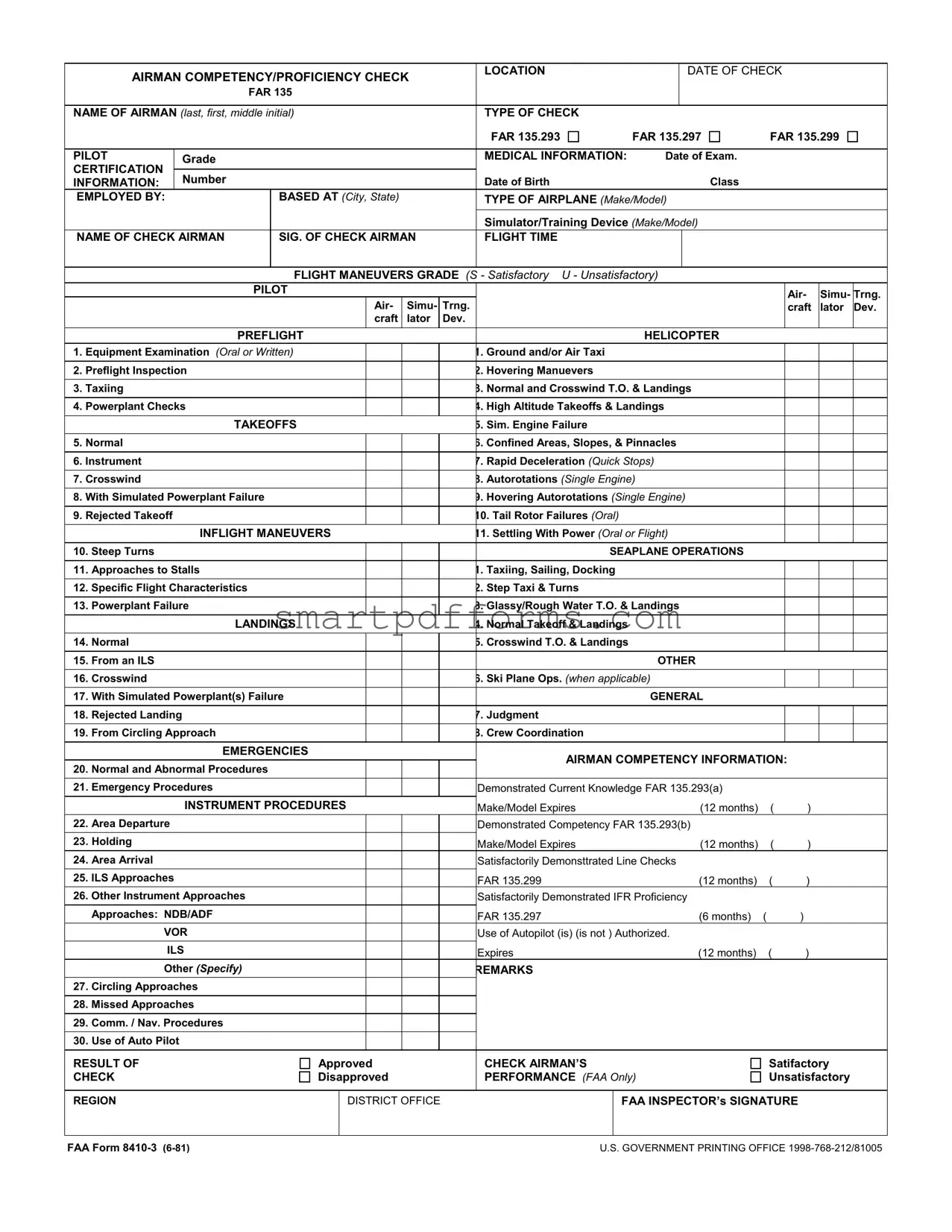In the world of aviation, the FAA Form 8410-3 stands as a crucial document designed to evaluate the competency and proficiency of airmen under FAR 135 regulations. This form is meticulously structured, covering an extensive array of checks and procedures meant to uphold the highest standards of safety and professionalism within the aviation industry. From basic identification details such as the airman's full name and medical information to more complex areas like flight maneuvers and emergency procedures, every segment of the form is designed to thoroughly assess an airman's skills and readiness. The form also requires detailed records of flight time, simulator training, and specifics of the aircraft used, ensuring that each check is tailored and relevant to the airman's operational environment. Specific segments focus on preflight helicopter operations, inflight maneuvers, seaplane operations, and various landing techniques, among others. Importantly, the form serves not only as a tool for evaluation but also as a record of an airman's ongoing commitment to competency within the ever-evolving realm of flight regulations. FAA inspectors or designated check airmen sign off on the form, marking a significant milestone in an airman's career. The FAA Form 8410-3 thus encapsulates the rigorous standards and detailed processes necessary to certify the aptitude and proficiency of pilots operating under FAR 135, contributing significantly to maintaining the safety and integrity of aviation operations.

